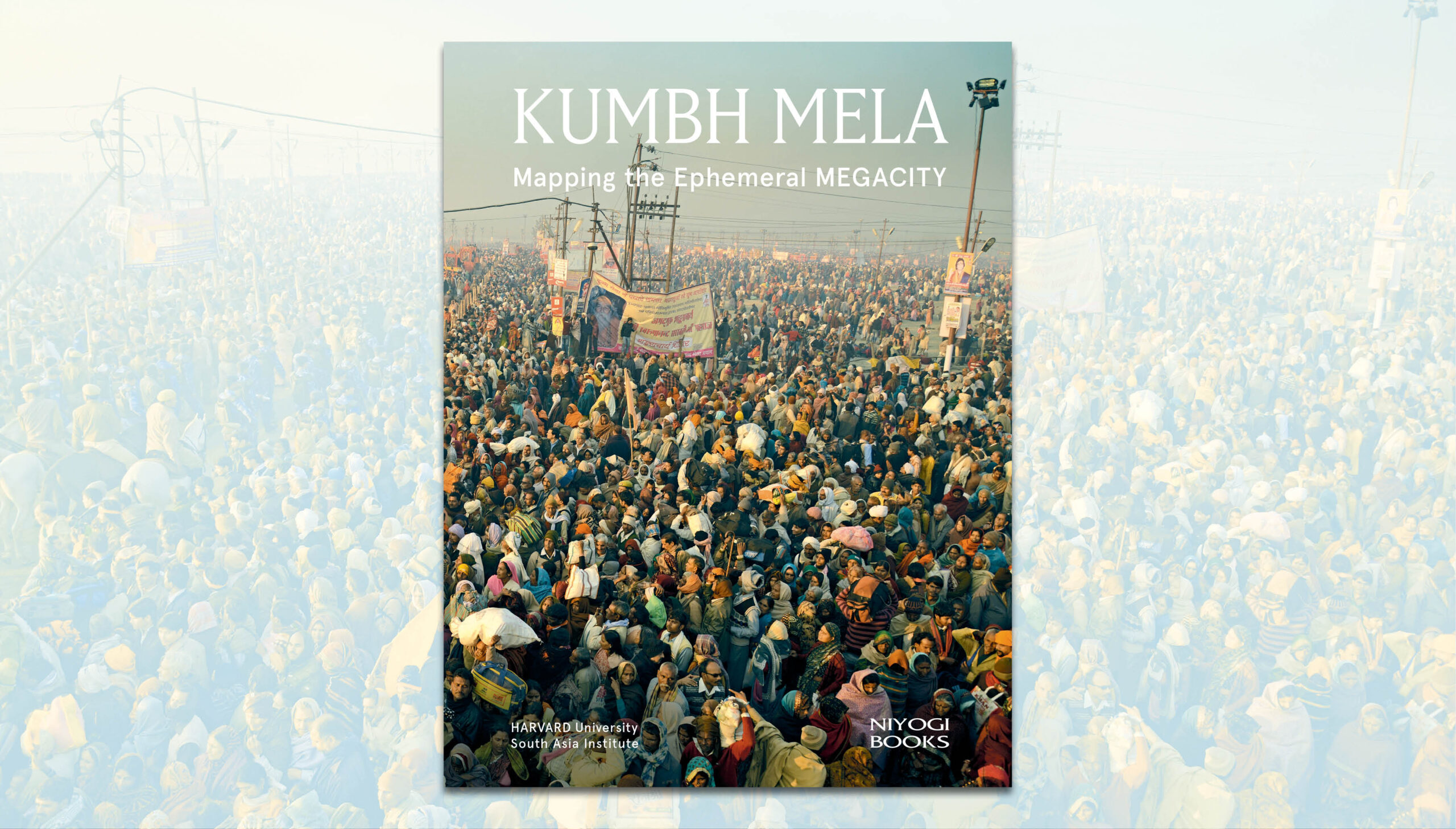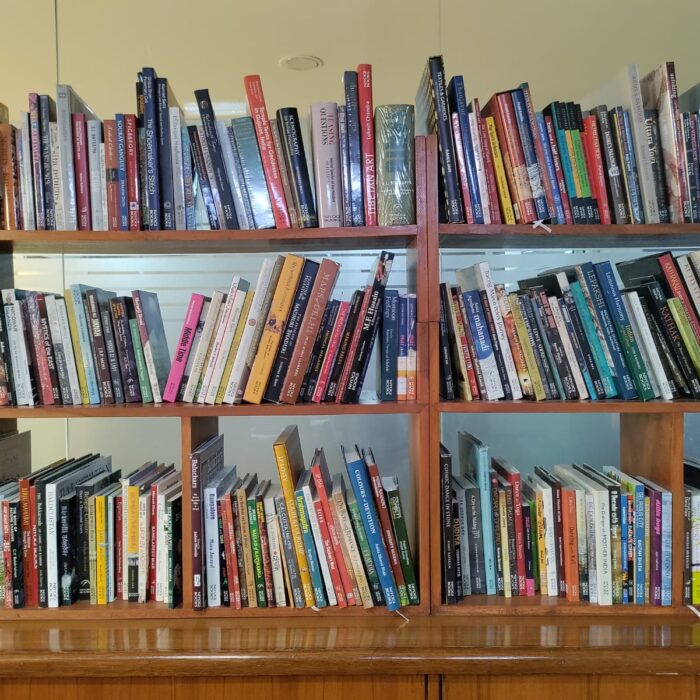
Excerpt THE KUMBH MELA: A City with an Expiration Date
The Kumbh Mela, a Hindu festival held every twelve years, is an extreme example of a religious congregation that generates a temporary settlement. Approximately five million people gather for fifty-five days, with an additional flux of ten to twenty million people coming for twenty-four-hour cycles on the six main bathing dates. The aggregation of units converges in an endless texture of cotton, plastic, plywood, and other materials all of which is organized by a smart infrastructural grid for roads, electricity, and waste, configuring the biggest ephemeral megacity in the world.
The ephemeral city of the Kumbh Mela is not only framed by a strong cultural ecology but also located in a highly dynamic physical geography, affected seasonally by the monsoon, which moves over the Indian peninsula into the dense network of sacred nodes across the sacred landscape. By superimposing these two networks religious settlements and different forms of hydrology-one can realize how this sacred geography is affected by the displacement of rainwater across the Indian subcontinent. Hydrological flows are at the very core of almost every sacred settlement in the region.
Looking closer at the state of Uttar Pradesh, one can clearly understand how the presence of the sacred rivers Ganges and Yamuna enable the occurrence of the Kumbh Mela. The rivers are key geographic features that define the towns they run through – they serve as major transportation routes for people and goods and shape the entire system of roads and regional infra- structure. Both of these sacred rivers configure the floodplain on which the temporary city for the Kumbh Mela settles. This temporary city has extremely elastic boundaries because of the monsoon’s effect on the amount of water that moves through the shifting rivers. The vacant space, especially along the riverbanks of the Ganges (Ganga in previous and pursuant sections), changes completely with the drastic expansion of the river’s surface during the monsoon season. From the month of May until late October, the whole plain is inundated, leaving less than eight weeks in between for the deployment of the ephemeral megacity. This short timeframe creates many design and planning challenges for the construction and administration of the Kumbh Mela.
How can we even start to manage this rapid, unprecedented process of urbanization that aims to assemble a city in a matter of weeks, on an area that is no larger than the span between the North End and Roxbury in Boston or the northernmost extreme of Central Park and the southernmost extreme Manhattan Island in New York City? How are these practical issues, such as the aggregation and displacement of millions of people toward the Sangam on major bathing days, managed by the administration?
The modulation of time in the process of deployment, as well as ritualistic thresholds set on the bathing days, must be managed in relation to natural cycles, most notably the monsoon season. These are the logistical dilemmas that strongly define the forms in which the ephemeral city is erected. Unlike a more permanent city where the construction of the physical environment happens as a simultaneous aggregation of relatively permanent parts that progressively materialize the space, the Kumbh Mela takes form like a choreographic process of temporal urbanization, happening in coordination with environmental dynamics. It comprises five stages: 1) planning, 2) construction, 3) assembly, 4) operation and disassembly, and 5) deconstruction These stages are directly linked to the makeshift context and timings determined by the presence of the monsoon in the region. Therefore the diagram and maps in this book show, among other things, how the deployment the city unfolds over time and in particular how the fluxes of people are the monsoon are coordinated. Large fluctuations of people and the shifting of the river make the Kumbh Mela site an unpredictable environment addressing even the most basic design challenges.
Right after the level of the Ganges recedes, when the monsoon seas is over, the ephemeral city is assembled over the course of a few weeks Once completed, it provides for the biggest public gathering in the world a pop-up megacity of roads, bridges, shelter, as well as a plethora of social infrastructures such as temporary hospitals, markets, police stations, and social centers, each replicating the functions of a permanent city. Issues of social inclusion, urban diversity, and even expressions of democracy arise under the framework of neutralizing grids of roads that differ in structure, module, and geometry. The accumulation of units converge in an endless texture of textiles, plastic, plywood, and several other materials, each organized by a smart infrastructural grid that articulates roads, electricity, and waste.


